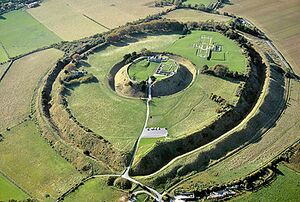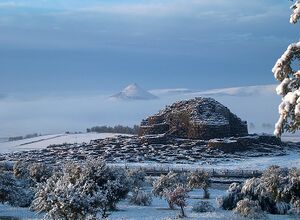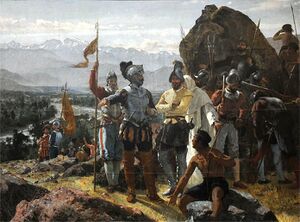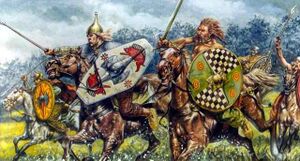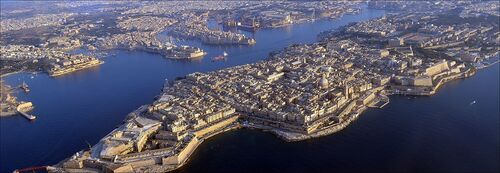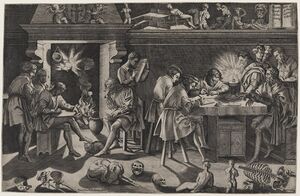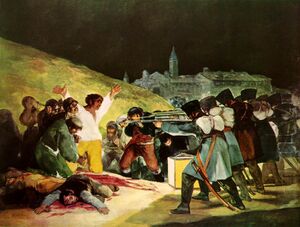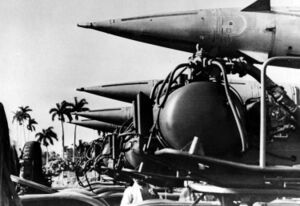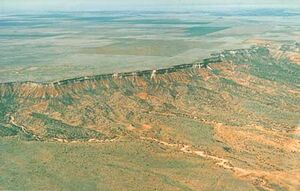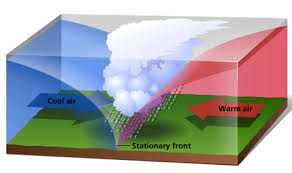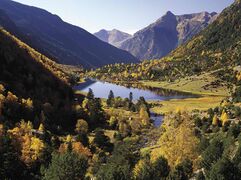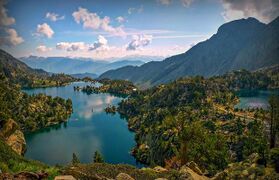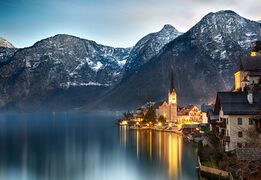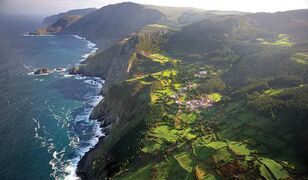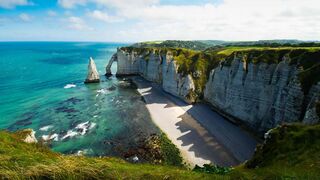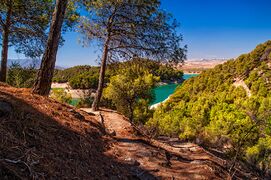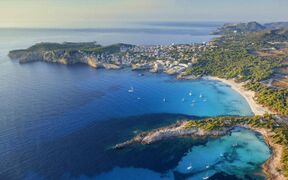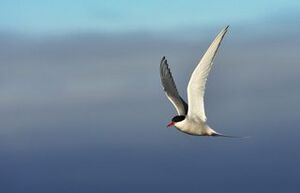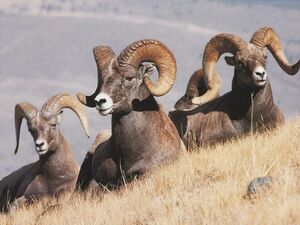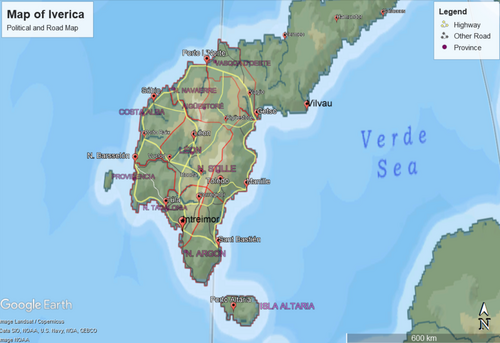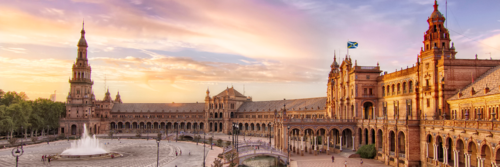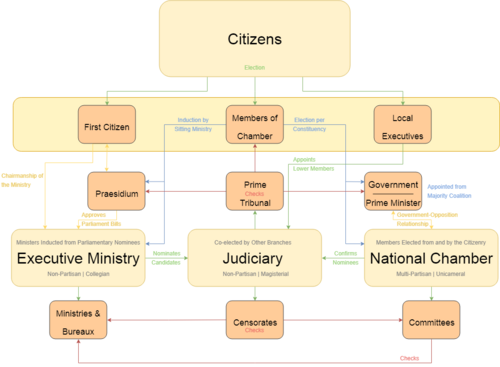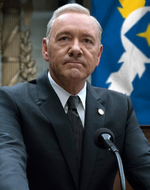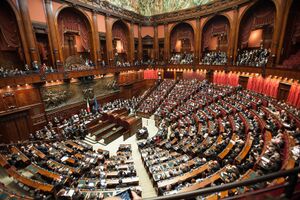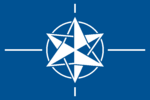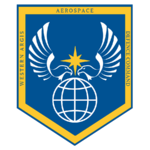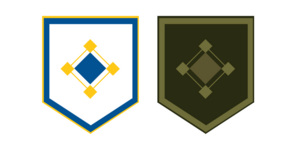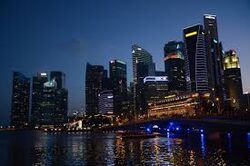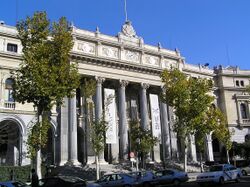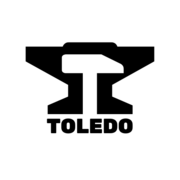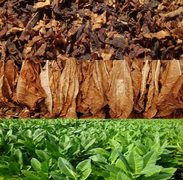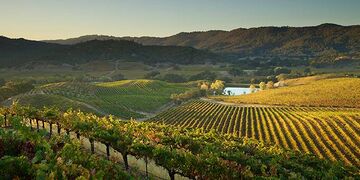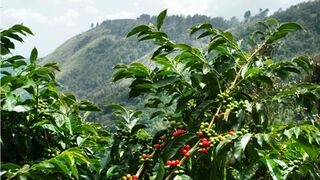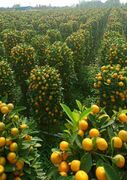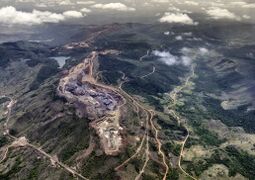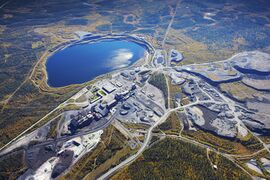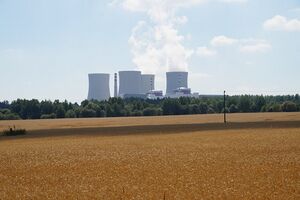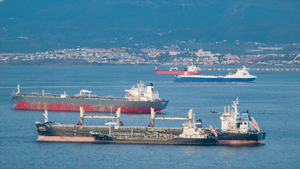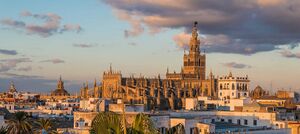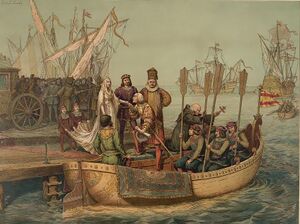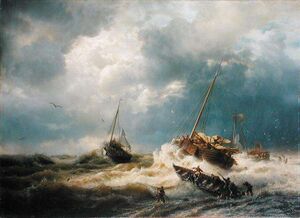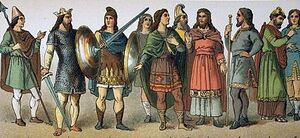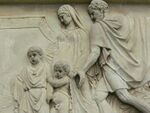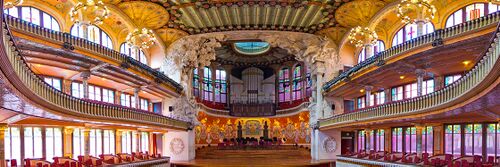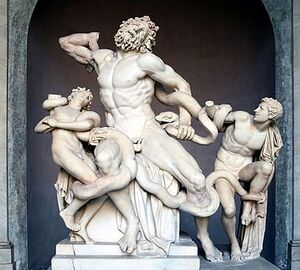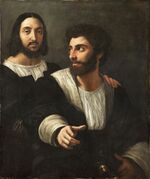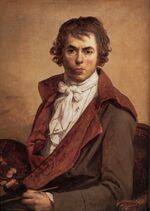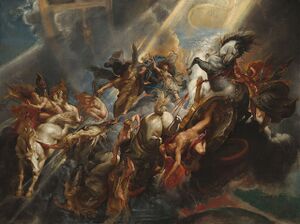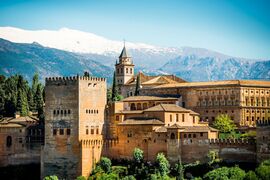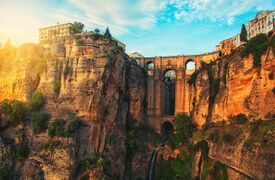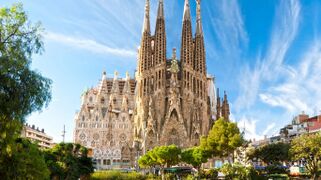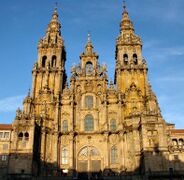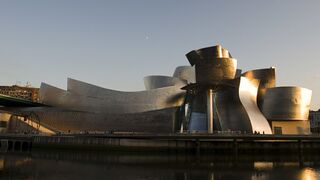Iverica
The Republic of Iverica L'República Iverica | |
|---|---|
| Motto: "Per Solidaridad! Per L'Pàtria!" | |
| Anthem: "Iofera" | |
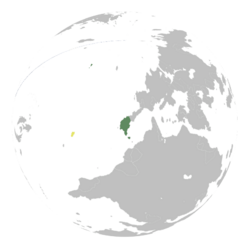 Iverica on Eurth | |
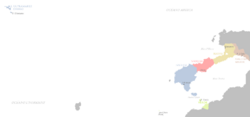 Iverica in the Federated Commonwealth | |
| Capital | Intreimor |
| Largest | Altaria |
| Official languages | Iverican |
| Recognised national languages | Common (Anglish), Iverican |
| Recognised regional languages | Indiense, Stillian Iverican, Vasqqan, other Narvic dialects |
| Ethnic groups | Iberics, Indiense, Vasqqans |
| Demonym(s) | Iverican |
| Government | Parliamentary Republic |
• Primo (First Citizen) | Franso Deitorr |
• Prime Minister | Abé-Juan Quenovi |
• Chief Justice | Maria Salasar |
| Legislature | Cámra Nasional |
| Succession de facto from the Iberic Empire (est. 1030 AD) | |
• Charter of the First Republic | 1650 |
• Charter of the Second Republic | 1765 |
• Charter of the Third Republic | 1950 |
| Area | |
• | 242,744 km2 (93,724 sq mi) |
| Population | |
• 2022 census | 62,633,965 |
| GDP (nominal) | 2022 estimate |
• Total | $2,858,967,500,001 ADS |
• Per capita | $45,645 |
| Gini | 31.1 medium |
| HDI | .824 very high |
| Currency | Iverican Velle (Ꝟ) |
| Driving side | right |
| Calling code | +86 |
| Internet TLD | .ive |
The Third Republic of Iverica, known officially in Iverican as L'República Iverica, concisely as The Republic of Iverica, and informally as Iverica, is a sovereign country lying on the western extremity of Argis. It is a member state of the Federated Commonwealth of New Iberium. Though largely situation on the westernmost region of the Iberic Peninsula, the Republic of Iverica also includes the Ultramares Islands in the North Oriental Ocean and Altaria Island adjacent to Alharu. Vasqqa D'Oeste is the only province of the Republic that shares a land border with another sovereign state, the Free State of Vasqqa. Apart from this land border, the Republic is surrounded by four bodies of water, with the Narvic Sea to the North, the Altaria Straits to the south, the Verde Sea to the south-east, and the North Oriental Ocean to the west. The Republic shares three maritime borders, with Narvic Sea lying between the Republic of Iverica and the Confederate Union of Narva, the Altaria Straits lying between itself and the Duchy of Verde, and the Strait of Providence lying between itself and the island nation of Saint Francoisbourg.
The Republic has a total land area of 242,744 square kilometres (93,724 sq mi) with more than 58 million inhabitants as of 2019. Iverica defines its government as a constitutional and parliamentary republic which derives its legitimacy as de facto and de jure successor the Iberic Empire. The current elected head of state, or "Primo", is Franso E. Deitorr, who has held office since 2016. The Republic's capital is Intreimor, a cultural, commercial, and religious centre with an urban area population of 6.1 million. The most populous city in the Republic is the port of Altaria, a commercial, maritime, and global city with an urban population of 6.4 million. Other major urban areas include Manille, Toledo, Porto L'Norte, Sant Bastién, Nou Barsellón, and Getso.
The Republic of Iverica has 12 constituent provinces: Aigüestoré, Altaria, Costa Alba, Léon, Navaerre, Nou Argon, Nou Stille, Nou Tacalonia, Providencia, Vasqqa D'Oeste (West Vasqqa), Vasqqa D'Sur (South Vasqqa), and Las Islas Ultramares. Of the 12, Altaria and Ultramares have semi-autonomous governance, both with varying powers. The colonial conquest and subsequent annexation of Vasqqa D'Oeste by the Republic of Iverica, followed by the second wave of unions between Narvic enclaves and the First Republic in 1765 to form the Second Republic, and the post-war reforms in 1950 and 1974 have formed the current Third Republic of Iverica. One-quarter of Vasqqa seceded from the Republic in 1974, leaving the present formulation of the Third Republic. There are six other recognised diaspora Solidaridad States in close proximity to Iverica. Such diaspora states are populated by the descendants of the Iberic Empire. Together, they recognise and form an ethnocultural sphere of Iberic derivative speaking states who recognise their common ancestry and work to preserve shared history and heritage. Iberic influence can be observed in the linguistic, religious, cultural, and political systems shared by many of its descendant colonies. As of 2020 there are approximately 182.3 million people on Eurth who's Solidaridad statuses are recognised.
The Republic of Iverica is rated as a developed country. It is the world's seventh-largest economy by nominal GDP and has the ninth-largest economy by purchasing power parity. Until recently, Iverica had a medium-to-low-income economy and a medium Human Development Index rating. It was one of the first Argic countries to industrialise with the proliferation of factories in the late 18th century. The Republic remains a great power, with considerable economic, cultural, military, scientific and political influence internationally. Along with Prymont it is recognised as one of the most-capable states in terms of counter-WMD defence but is not known to be armed with weapons of mass destruction itself since it deactivated its sole prototype at the close of the Second Argic War. It has been a permanent member of the Association of Iberic Nations since its founding in 1918. It has been a leading founder and member state of the Argic-Thalassan-Alharun Regional Association (ATARA) and of the Tricontinental Defence Treaty Organisation (TRIDENT). The Republic of Iverica is also a member of the G7 and the Trans-Continental Science Initiative (TCSI/ISTC).
Etymology
The name Iverica is derived from the former Iberic peoples who first settled the coastal regions of the peninsula in 1621. The current ancestors of today's Iveric people were composed of settlers and refugees fleeing political persecution from the victorious revolutionaries in their homeland of the Iberic Empire. These refugees were largely made up of closely-related ethnic groups who had either politically resisted or actively fought the anti-monarchist and anti-Tacolic revolutionaries. The name "Iveric" is the Tacalan language's derivative of "Iberic". The Iveric language incorporates a majority of Tacalan orthographic and phonetic conventions rather than Stillian, given the larger number of Tacalans among the settlers at that time. Most Iverican scholars have theorised that the name was again derived from the name Ibra or Ivrae, which in archaic Tacalan means high valley, referring to the Europan valley between the Léonid and Tacalan kingdoms.
Many of the settlers were from the Tacalan and Stillian regions, who during the civil war of 1590 and peasant revolts in 1592, had supported the monarchy and the Tacolic Church.
History
Main Article: History of Peninsular Iverica
For the history of the Iberic civilisation in Europa, see: Iberic Empire
Prehistoric Settlement
The earliest archaeological evidence of Pre-Iveric inhabitants come from the excavated remains of Neolithic settlements preserved in layers volcanic ash. These Neolithic inhabitants were named "Sindragente" or "ash people" by the Ivericans who had learned of the people's existence from the Narvic oral traditions. This ancient group purportedly utilised the volcanic ash found surrounding the mountains for pottery and crude masonry. In old Narvic, the group is called "Erouthixonein" another word that also translates to "ash people"
The tribes are noted to have originated from the continent proper of Argis. The common theory being that they migrated via the thin north-eastern isthmus in waves from a period between 4500-4000 B.C. Currently, this land-migration theory is the most widely accepted on the basis of the volume of archaeological evidence. Maritime migrations are largely speculative as evidence of such activity in that period has yet to be discovered.
A series of volcanic eruptions seem to have deterred the growth of the Neolithic tribes from periods between 2000-1800 B.C. After this period, archaeological evidence of human activity decreases dramatically. There is a general consensus among Archaeologists that this event signalled the downfall of the Sindragente.
A period of inactivity is known to have followed the downfall of Iverican Neolithic peoples. According to geological data, much of the surface of the land is known to have been covered in volcanic ash, resulting in the death of most of the crops left behind by the Neolithic people.
Narvic Settlement
Around 800 B.C, the first wave of Narvic settlers constructed a settlement in what is now the outer city-limits of Intreimor. Much of this settlement's palisade and forge is preserved and on display today.
The Narva were a group of maritime nomadic tribes from the northern coasts of the continent proper, likely seeking fertile new lands to settle in the south. The Narvic sites evidence a sophisticated knowledge of fortifications, the evidence of bronze, and later iron tools similar to those from the continent proper.
The Narva developed a socio-political structure centred around a monarch and animist religions. Their culture, on the other hand, was focused on ancestral worship, and oral tradition. Much of Iverica at this point was divided into petty kingdoms which were constantly at odds fighting over rich hunting ground, arable land, and bountiful fishing sites. This status quo persisted until their eventual capitulation to the Iveric emigrants.
Narvic Plague
An epidemic of what can be described by a few written accounts as a highly contagious, and aggressive influenza struck the Narvic kingdoms repeatedly over the years of 1380, 1478, and 1591 A.D, resulting in a total death toll of over two-hundred thousand Narva.
Historians point out that worst outbreaks coincided with the large population growth in Narvic cities during this age. It is likely that the cramped conditions and poor infrastructure of cities at the time had aided in the spread of the virus.
As a result of this, the Narva had largely abandoned many of their largest cities by the start of the 17th century.
Iveric Colonisation

During the year 1620 A.D, Tacolic priest and historian Lemuel Urquijo documented the conflict between Iveric and Narvic Kingdoms. The account holds that Iveric Admiral, Esteban Deiargon, attempted to settle the inlets and bays around the western coasts but was turned back by constant raids by Narvic warriors. The Iverics, also called Iberics, were newly arrived from the event known as the Gran Viatge or the "Great Voyage".
The Gran Viatge was a mass exodus of ships fleeing a radical peasant's revolution destroying the Iberic Empire, in Southern Europa. It encompassed more than 16 separate waves of refugees, embarking in different numbers at different times. The first and longest exodus journey took place between 1593 to 1620 and involved a starting population of approximately 70,000—it was known as Deiargon's fleet, after Almirante Esteban Deiargon who led it. The routes vary between exodite waves, but the most storied and infamous route was Cross-Oriental route, which claimed the lives of more than half the fleet's population. Constant storms, illnesses, and pirate raids would slowly reduce Iveric numbers until a population of 28,000 would make landfall in 1620.
Hostilities with the Narvics began when Iveric settlers made camp in a river delta in what is now Providencia. The site was purportedly uninhabited, although the large Narvic Kingdom of Narstun, based up-coast to the north had apparent religious interests in the area. It is speculated that this was unknown to the settlers at that time. Regardless, they were attacked in the night and subsequently slaughtered or taken as captives. Deiargon, who was aboard his flagship at that time, moored miles further off due to the receding tide only learned of the settler's fate in the morning. He quickly dispatched messengers to his subordinate captains most of whom were away mapping the coastline.
Deiargon's orders were to mount a counterattack to liberate the captive settlers. Fierce skirmishing ensued around the coastal hills and river plains. The Iverics had the advantage of arquebus and pike weaponry and tactics, which they employed to great effect against Narstunic cavalry armed with short spears. Eventually, with the help of artillery from the newly arrived Iveric ships, Deiargon was able to successfully lay siege to and occupy the Narstunic kingdom's walled capital. Today, the ruin sits atop the Elector's hill in Intreimor, which overlooks the later-built fortifications of the city's bay-inlets.
Following the capture of the Narstunic stronghold, Deiargon, now de facto leader of the Iveric pioneers, was successful in creating an alliance with a few neighbouring Narvic kings. In a ceremony still celebrated at present called The Blood Compact, Deiargon and his newfound allies conducted the elaborate ritual of bloodletting and oath-swearing. The ceremony also led to a treaty being signed, stipulating the equality of the allied kingdom's citizens and the Iveric settlers and allowing for inter-marriage.
The kingdoms now divided, fell gradually to the growing Iveric forces. Supplemented by over 30,000 allied Narvic troops, several decisive battles were fought around the Cordilleras. The conflicts were brutal, exacting heavy tolls in attrition and violence, though eventually, the forces of the Blood Compact forced the significant kingdoms into capitulation. Despite this, resistance by smaller mountain kingdoms within the Cordilleras and in the Eastern Marches would continue to mount small skirmishing wars and raids in defiance of the Compact Alliance's occupation.
In the coming years, the colonial population would swell, supplemented by a constant stream of migrants who had heard the news of Deiargon's early successes. Many of these were stragglers, eking out a meagre living in the frigid coasts of the Ultramares islands while waiting for the fighting to die down. Many more came from the refugee population who had fled to Sanctum Imperium Catholicum.
The conquest came to an end in 1645 A.D, after two decades of on and off conflicts. Most Narva had capitulated or had been taken as serfs by the Iveric. The last Narvic king finally agreed to terms of surrender upon the condition that Deiargon and a number of his subordinate captains take Narvic wives, and allow degrees of autonomy within some Narvic provinces. Urquijo's notes state that Deiargon died of blood poisoning nine years following, after being savaged by a Midget Bear.
Succession of Iverican Republics
First Republic and The Peninsular Renaissance
In 1650, Deiargon was elected as Primo or "First Citizen", and given temporary dictatorial powers for the period of 5 years until his predetermined retirement from national leadership. However, Deiargon would not live to finish his term. Though still purportedly healthy and active, he died in 1654, at 74 years of age—remarkably old for a survivor of the Viatge. At this time, a unicameral legislature had officially been formed to draft the first constitution declaring Iverica as the rightful successor of the Iberic Empire.
Several expeditions were undertaken by the Revolutionary Iberic Army to occupy Iverica, but many of these met afoul of stormy weather. Of the three expeditions that did arrive, two were defeated and taken prisoner, while one defected to the Iverican Republic.
The Legislative Chamber, the Cámra Nasional, made several amendments over the years, laying the groundwork for the current system of an independent judiciary and equilateral executive office.
The Renacimiento Peninsulares, known in Anglish as the "Peninsular Renaissance", followed shortly after the charter of the First Republic and was a period marked by the flourishing of colonial literature, art, theatre, architecture, and technology. Agreed by most Iverican scholars to have begun in 1650, with the first establishment of the Academia Peninsulares in the province of Providencia, it would continue in successive decades until the later portion of the 18th century. In general, the period is a notable step in the progression from individual and guild-based production to academic and later industrial concepts of progress.
The Renaissance saw a broadening of Iverican cultural perspectives, spurred by the rapid exchange of artistic works and printed communication. Iberic Solidarity as a concept is many times said to have been "born from the ink of the Tacalan printing presses". Encouraged by the example of Deiargon and his efforts to unite the Narvic and Iberic races, the general populace, by this time mestisso by majority, further entrenched the Peninsular pragmatist and Solidaridad values.
The Decades of Civil Strife and The Second Republic
In 1740, tensions between the regional governments of Nou Stille and Nou Tacalonia created a political dichotomy. Furthered by the unexpected death of the then Primo, Manuel Bascon, party influencers from the Partes Peninsulares and Partes Stille attempted to position candidates to fill the position of Secundo. Normally, the position was given by the sitting Primo and kept confidential, the ceremony only being witnessed by the Cabinet Chiefs of the Executive Ministry. As the investigation was inconclusive, Parliament was forced to convene in order to establish the grounds for a snap election. This would prove disastrous as the subsequent campaign and elections were marred by foul-play and illicit campaigning actions. Eventually, growing political tensions gave way to a radical takeover, enacted by the Partes Stille in the form of a coup. The coup failed to achieve many of objectives and urban conflicts escalated when the riots in Toledo, Manille, and Intreimor were met in force by Partes Peninsulares supporters. Eventually, the Guardia Civil was activated and stepped in after the Camrá declared martial law. This would backfire as the ensuing gendarmerie takeover resulted in an ad-hoc junta of Guardia Civil and Guardia Peninsulares officers. In the proceeding decades, civil conflicts between region-loyal regiments would be sparked by a succession of party leaders from both the Peninsulares and Stille trying to gain the support of ambitious junta figures. This was known as the Tacalonian-Stillian conflict.
In 1746, the conflict came to a close when a demagogue known as Maximo Olivar took power through another ad-hoc party of citizens turned fascist mob. He declared himself dictator in 1747, dissolving the Camrá Nasional which had been too fractured to respond effectively. In the same year, Olivar launched a period of political cleansing, leading to the execution and murder of many of his opponents most notably resulting in the razing of several Barrios around rural Nou Tacalonia. The regime's imperialistic military policies also led to unrest and eventually revolution in the colony of Mauridiviah.
The regime was overthrown in 1765 when dissatisfaction and war-weariness reached a boiling point. The Palá dei Primo was stormed by counter-revolutionary elements of the Peninsular Guard's elite Horse Grenadiers in March of 1765, where they arrested several cabinet members and Olivar himself. Olivar and his most loyal supporters were put on trial in July of the same year, tried by the formerly exiled members of the Judicial Presidio and a popular jury. Olivar and over 299 of his supporters including governors, cabinet officials, Members of the Chamber, university masters, guild leaders, and Guards officers were sentenced to death by firing squad--the capital punishment reserved only for deserters, spies, and traitors to the Republic. They were executed in the Campo dei Marso, a square just outside of Intreimor, with executions lasting an entire week.
In the following months, the Camrá was reinstated, new members and Ministers were elected and the charter of the Second Republic was drafted. This would mark the single largest series of reforms since the Republic's first charter. Notably, the most significant changes included the amendments to the Executive Ministry's delegation of power and its check and balance of the Camrá Nasional, the re-organisation of provincial government power, and the restructuring of the Guardia Civil's subordinacy to the Camrá. The ensuing momentum of political activity would also pave the way for rapid industrialisation and commercialisation with new government's renewed interest in the reordering of its economic institutions.
The Argic Wars and The Third Republic
In 1945, The Republic was once again faced with political in-fighting over conflicting ideas on how the fascist takeover in Narva and Greater Galicia was to be addressed by the national government. In the 1940's bloc influence around Western Argis was roughly divided along the lines of ultra-nationalism or conservative republicanism. Coalitions of ultra-nationalists in Hellenic Rus and around Central and Western Argis were having an unprecedented effect on the domestic policy of Iverica's close allies among the Argic-Alharun Iberic Diaspora. By 1945, Narva and Galicia Major in Argis proper had elected a nationalist majority. The ensuing months marked a breakdown in diplomatic relations between the Republican states of Iverica and Vasqqa and the now-nationalist states of Narva and Galicia Major who were increasingly friendly with the fascist government of Hellenic Rus.
In 1947, Hellenic Rus began the annexation of Korelio, an unrecognised autonomous state in its southern border. The Prymontian state of Ostport responded with an ultimatum within days. If the Russians did not withdraw and issue reparations, Ostport and her close allies would be forced to respond with force. The Russians issued no reply and the deadline for the ultimatum passed without a withdrawal from Korelio. In June of 1949, Ostport declared war on Hellenic Rus and deployed its military forces in support of Korelia. Within 24 hours, Hellenic Rus, Narva, and Greater Galicia returned the declaration of war on Ostport and her Prymontian allies. In the same hour, Iverica issued a declaration of war against all three nationalist allies. The First Argic War's combat actions begun the next day in the Peninsula, fought throughout Vasqqa, the Narvic Sea, the Verde Sea, the Duchy of Verde and the Argis proper. It lasted until Narvic and Galician capitulation in 1954.
Shortly after the Narvic and Galician capitulation, Iverica saw a series of reforms in light of a post-action examination of government processes and performance during the conflict. A Camrá committee deemed the restructuring of military, administrative reform, and further command-economy planning to be necessary for the tense post-war relationship had with states on Argis' continent proper. The momentum and political interest post-war saw renewed state and private investments, renewed confidence in social institutions from popular perspectives and resulted in the largest economic boom since the industrial revolution. This period, generalised as lasting from 1954-1968, also saw the adoption of new voting systems like the first past the post system in the executive and legislative processes.
In 1966, Iverican diplomatic relations were once again strained by the proliferation of experimental missile weaponry in the Central and Western Argic regions. Hellenic Rus and its client states had increased their offensive presence around their borders and client states thus troubling Iverican commerce in the affected areas and causing a stir of public suspicion that the nationalist bloc was escalating for a missile war. This event, called the First Mediargic Missile Crisis served as the prelude and escalation which eventually led up to the Prymontian-Iverican response in 1968—the Second Argic War, which is attributed to have been the critical factor in causing the Vasqqan Civil War in 1974 and a precedent for the Second Mediargic Missile Crisis in 1996. Unlike the First Argic War, combat action was more widely dispersed and of a generally lower intensity and scale owing to the growing dependency on electronic warfare, missile technology, and other forms of warfare not critically dependent on high manpower. The Second Argic War is noted to be an important factor in testing Iberic unity and trust in the Third Republic's reforms.
Geography
The entirety of Iverica sits on the western edge of the Iveric Peninsula, which makes up the south-western fringe of the Argic Plate. It is located in the temperate zone of Argis and bordered in the East by the continental mainland. The main landmass is made up of fertile valleys with underlayers of volcanic ash, likely formed by eruptions and carved out by shifting magma flows millions of years ago. The central regions of the peninsula are mountainous, with a few regions still notable for volcanic activity. The southern parts of the peninsula consist of foothills, valleys, a few flat regions, and wetland regions. Central and Eastern Iverica is mostly composed of low, gradual plateaus and river valleys. Iverica's Northern and Western coasts consist of interspersed brackish moorland and coastal limestone or chalk cliffs with an igneous bedrock formed from volcanic activity.
Most of the population resides around the south-western and eastern coasts of the peninsula, where the land is easier to farm and where it is close to major ports. Populations in the hilly and mountainous regions typically lie close to the riverbanks flowing from deep underground springs within the mountains.
Land use in Iverica is highly diversified. River valleys such as in Léon, Providencia, Costa Alba, and Vasqqa D'Oeste were once forested fields but have gradually been cleared for agriculture. Iverica also contains a number of sweeping plateaus referred to as "high plains" or "Mesas" due to their breadth. Some, like the Stillian Mesa, the Vargenio Mesa, and the Montaco D'Oeste Mesa are wide, stable, and irrigated enough to host cities, mining complexes, and industrial districts. Toledo, famed for its steel manufacturing, is one such city. Hilly regions around the central and coastal provinces are usually used for pasture ground, host to many flocks of Argic Sheep, a staple source of meat for Ivericans.
Geology
The Iverican landmass consists mainly of a large peninsula and a few smaller satellite islands situated on the Borean Tectonic Plate. Much of the peninsula is believed to have been formed over 20 million years ago following a series of volcanic eruptions from a now dormant hot spot named the Iverican Plume. The eruptions formed a landmass centred around the volcanic ridges and grew to encompass several smaller islands to form the area of Iverica Major. Iverica is separated from the Vasqqan Isthmus by a large mountain range known as Sierra Iverica, a region with frequent landslides and seismic activity.
Climate
This article is incomplete because it is pending further input from participants, or it is a work-in-progress by one author. Please comment on this article's talk page to share your input, comments and questions. Note: To contribute to this article, you may need to seek help from the author(s) of this page. |
Lorem ipsum dolor sit amet, consectetur adipiscing elit. Morbi leo velit, vestibulum quis consequat et, ultrices et enim. Integer eu metus ac enim pharetra suscipit consectetur sit amet nulla. Quisque vel turpis id orci tincidunt pulvinar. Phasellus condimentum, quam id sollicitudin euismod, nisi leo ullamcorper elit, id feugiat sapien elit ut sapien. Vestibulum vehicula aliquam erat, id laoreet nunc consectetur nec. Morbi nec turpis in libero ultricies molestie. Nam dolor enim, tristique quis lacus quis, hendrerit elementum turpis. Maecenas nec viverra tortor, eget facilisis arcu. Curabitur faucibus lectus eu eleifend egestas. Duis commodo nisl ipsum, et molestie erat interdum nec. Integer porta, purus nec laoreet feugiat, erat ligula molestie ipsum, tincidunt iaculis sapien augue vitae leo.
In iaculis massa eget neque cursus, sit amet elementum ipsum condimentum. Proin dolor leo, sodales a egestas quis, ullamcorper at enim. Aenean et lectus dignissim felis viverra tempus quis ut leo. Nam elementum, tellus a pellentesque ultrices, est ipsum facilisis turpis, sed sagittis felis neque vitae justo. Phasellus ut aliquet felis. Curabitur ullamcorper laoreet orci venenatis aliquam. Proin gravida, nunc id facilisis cursus, ante ligula sollicitudin nulla, rhoncus maximus augue metus nec eros. Morbi porttitor ex vel hendrerit molestie. Fusce semper elit tortor, at fringilla eros porttitor non. In eget suscipit risus.
Nullam blandit elementum libero non suscipit. Mauris placerat lacus et nisi auctor consectetur. Sed ut porta mi. Praesent consequat ac metus sit amet auctor. Aliquam erat volutpat. Nullam sollicitudin dolor at hendrerit lacinia. Vivamus at dignissim ex. Fusce efficitur commodo maximus. Orci varius natoque penatibus et magnis dis parturient montes, nascetur ridiculus mus. Phasellus lorem ipsum, congue id magna sit amet, blandit vulputate sapien.
Environment
The government of Iverica strictly regulates industries which are potentially harmful to the country's environment. The Ministry of Environmental Protection maintains segregated zones where heavy construction, population, and industry are either heavily taxed, or banned outright.
Much of Iverica's northern and central regions are popular mountaineering and hiking attractions. The hardened magma flow from pre-historic eruptions can be credited for the otherworldly landscape in these regions.
The warmer south-eastern regions are much more level, as the magma formations gradually cooled into either flat open spaces or a low spread of hills. These areas are where much of Iverica's farm, pasture, and metropolitan areas are located. They are popular destinations for tourists seeking quaint coastal charm of the old quarters of the ports, or the villages by the limestone cliffs left behind by some of the smaller islands prior to the volcanic formation.
Fauna
Iverica's national animal is the Argic Tern, which maintains a number of nesting zones around the Iverican peninsula. The tern is Iverica's spiritually-representative animal, holding historical and cultural importance to Ivericans for its role in the Gran Viatge. Iverica is a primary nesting zone and one of the best sites to observe one of the largest pre and post-migratory populations in both summer and winter seasons.
One species of sheep, the Argic Sheep (Scientific: Ovis Argica | Iverican: Ovía Cachondo) is native to Northern and Western Argis and commonly found around the Iveric Peninsula. It is an important livestock species, Mutton from domesticated Argic Sheep making up roughly 40% of annual butcher sales.
The Argic Sheep are suited to both low pastures and higher mountain environs. The females are relatively gentle and easier to domesticate, though the males remain extremely ornery and must often be sedated to study and collect breeding material from. According to a recent study conducted on the hormonal levels of the Argic Sheep, it was found that Argic Rams contained easily twice the testosterone of a Europan Ram, which is about 30% more testosterone than a Selayari Tiger and on par with most Great Black Sharks. The Argic Ewe, on the other hand, carries a uterus 3mm thicker and half a litre more in volume than a Europan ewe, causing births in litters of 4-6 around twice or thrice a year—all in all making the species one of the most prolific among meat-based agriculture staples. On occasions, the Argic Sheep populations have reached levels where their natural activities have become the subject of day-to-day occurrence in the street corners and bus-stops of rural townships.
A notable species is the Social Justice Warrior or Socialis Bellicosus which struts about the cities and plains sifting through other people's business. This subspecies is said to be a missing link between man and primate is often considered a pest in areas both urban and rural. City-dwellers attempt to rid themselves of them by applying a special aerosol spray while most farmers and shepherds find 12-gauge to be a far more effective repellent.
The Social Justice Warrior is rated fair hunting by the Ministry of Fish and Game. Cunning deer migrate mountain-wards to avoid a grisly dinner table fate while flocks of Social Justice Warriors are regularly downed on open seasons despite their reputed foul taste and smell.
Administrative Geography
The Republic is composed of ten primary provinces located on and around Iverican Peninsula. Each province maintains a local government, law enforcement, and public works system. Provinces are further separated into constituencies such as Municipios and Barrios which elect their own representatives in the legislature. While largely unitary, Iverica lends a degree of autonomy to its constituent subdivisions. Cities like Porto Altaria, Manille and Toledo are examples of areas with special economic freedoms.
Local governments have their own smaller hierarchies in the judiciary, administration, and legislative representatives. The elected head of a province is called a Governadorcillo, typically running from a pool of Comtaté Capitanos who in turn, are elected from the regular citizenry.
(INSERT: LIST OF PROVINCES AND CITIES)
The geographical division of Iverica into Provincias Municipios and Barrios began in the early Colonial era and was complete throughout the Republic by the early Modern Period. Modern local government by elected councils, partly based on the ancient counties, was introduced separately per province after the 1765 reforms, meaning there is no completely uniform system of administrative or geographic demarcation across the Republic. Until the 19th century, there was little change to those arrangements, but there has since been a constant evolution of role and function.
The organisation of local government in Iverica is complex, with the distribution of functions varying according to local arrangements. The upper-tier subdivisions of Iverica are the 11 provinces, used primarily for statistical and mid-level executive functions. Two regions, Altaria and Ultramares, have had a directly elected assembly and mayor since their respective Allowance of Autonomous Government following popular support for the proposal in referendums. Other Provincias were also given their own elected regional assemblies after the Second Republic Charter, and maintain a Provincial Cavildo or executive chapter council with a uniform national structure. Below the Provincial tier, some parts of Iverica have Conseios dei Comtaté or Conseios dei Barrio and Conseios dei Municipio; while Intreimor as a special case consists of 32 Barrios dei Ciudad and the Quatro D'Ecclesia. Councillors and Comtaté Capitanos are elected by the first-past-the-post system in single-member wards or by the multi-member plurality system in multi-member wards.
- Iverica proper: 530,575.71 km2 (204,856.43 sq mi)
- Altaria island: 11,115.23 km2 (4,291.61 sq mi)
- Verde island: 2,630.25 km2 (1,015.55 sq mi)
- Nou Madri: 17,917.75 km2 (6,918.08 sq mi)
- Islas Ultramares: 4,949.88 km2 (1,911.16 sq mi)
Government
Main Article: Government of Iverica
Iverica is a constitutional parliamentary republic which derives its legitimacy from a de facto and eventually, de jure succession from the Imperium Iveria (Iberic Empire). The Government's power is maintained by both popular consent and constitutional authority. Citizens elect officials in both the executive and legislative branches of the government using the instant-runoff voting method. Some positions, however, are appointed by other elected members of the government.
Iverica claims to be the principal successor to the Iberic Empire. Iverican sovereignty is presupposed by this claim, and the state requires that foreign governments accept this position prior to any mutual recognition.
Camrá Nasional (bottom) chief assembly building of Cameral Members
The Constitution
Main Article: Constitution of Iverica
The Constitution of Iverica is the supreme law of the Republic. It has seven main articles and fifteen amendments.
Excerpt, The Preamble: Let it be known to all, that this charter of principles represents the emancipation of the Iverican people from the tyrannical and unlawful dominion of the criminal government over the Fatherland. It is the desire of the fair, and free people gathered under these articles to exercise the fundamental freedom to self-determined governance and rule. We hereby endeavour to form a fairer and just Republic in pursuit of the common good. This united people will strive to establish a community free from the evils of enforced silence, and oppression of man's personhood. Under Solidarity, our united strength will ensure defence against tyranny from within, and without, our united strength will seek only to promote common prosperity, and further promote the rights of the human person, whom we hold as the core of society. Declared under the eyes of God, in the stewardship of His absent servant in the crown, and made just by the principles of democracy, do the freely gathered people here, establish this great Republic of Iverica.
Executive Branch
The executive branch is called the Executive Ministry (Iverican: Executivé Ministerio | abrev. ExecMin) of Iverica. It serves as the national cabinet and advisory council for the Primo if Iverica. Members are each given authority of specific Ministries in the Iverican government, and thus are responsible for the Ministry's budget, staff appointment, and annual agenda. A new member Minister is selected once a year from Members of the Legislature who have been in office for at least 2 terms. Ministers are typically considered for the bills they have authored, their educational attainment, professional experience, or their distinction in Chamber debates. Each Minister serves a fixed term of seven years.
Elections for the Ministry are called "Executive Elections". Ministers currently in-office start by beginning a vetting process collecting a portfolio of likely candidates from distinguished Members of Chamber. Top candidates from the list are summoned and interviews and debating audiences are held before the assembled Ministers. After this vetting period, an election will be held amongst the assembled ExecMin. An instant run-off method is used and all members of the current Ministry are required by their office to vote. Only one Minister will finish his/her seven-year term per year, so in effect, one member is replaced every year. This cyclical process is effective in safeguarding the Executive branch from radicalisation and instrumental in maintaining continuity in governance.
The Primo or "First Citizen", is the head of state of the Iverican government. The Primo is appointed by a popular vote and serves a term of five years. This office has the power to veto or pass Chamber bills, the power to sign international treaties and to meet with foreign delegations. The Primo is to be advised by the Executive Ministry but is neither superior nor subordinate to it. Instead, the Office of the Primo is seen as a powerful parallel office which represents the will of the people in governance by playing key roles in deciding the Ministry's agenda and balancing the power of the legislature. As a check against the Executive branch, both the offices of an Executive Minister and the Primo can be impeached by a 2/3's of the Cámra Nasional's vote.
Legislative Branch
The legislature is composed of a unicameral Parliament (Iverican: Cámra Nasional). It is composed of Members of the Chamber (Iverican: Miembro dei Cámra | abrev. MEC ) elected from local constituencies around Iverica and they serve a fixed term of 4 years available for re-election only once consecutively. The Chamber is divided into the house majority (Government), and the minority parties (opposition). Members of the Chamber vote, author, and debate upon bills on the Chamber floor. Though the Primo can veto the Chamber's bill, it can take the floor in the Chamber once again, and if passed, cannot be overruled by Executive Veto.
Judicial Branch
The Judiciary is selected by an independent citizen's committee called the Judiciary Electorate (Iverican: Praesidio dei Justicia). They are responsible for appointing positions in the various courts of Iverica. The Judiciary Electorate Board is made up of seven members. The Board is composed of two former Executive Ministers, two Members of the Chamber with at least two terms of experience, two former judges, one appointed citizen attorney. The role of the Judiciary is to interpret the constitution free from influence by both executive and legislative branches. They are to be impartial to either branch of government in keeping with the principle that no citizen is above the constitutional law.
Foreign Relations
Iverica maintains strong diplomatic ties with continental neighbours and overseas associate states. It has an extensive network of embassies and consulates most prominently in Argis, Thalassa and Alharu. Iverica maintains some ties with Europan states and is currently working to improve relations through bilateral activity in southern, central, and eastern Europa.
Iverica also operates a foreign intelligence office known as the Special Security Office (SSO). It is responsible collecting intelligence on events which may threaten Iverican sovereignty foreign holdings.
ATARA
Iverica is a founding member and current Panel Member of the international economic cooperative known as ATARA, or the Argic-Thalassan-Alharun Regional Association. Iverican delegates co-authored the organisations founding Charter and procedural documents.
As known by its acronym ATARA, it comprises of an array of Argic, Thalassan, and Alharun states that is meant to encourage solidarity and cooperation amongst its members to strengthen relations and to aid in times of need, whether they are man-made or natural. This also involves matters of scientific, social, cultural, technical, and administrative fields. ATARA's headquarters is in Porto Altaria, Iverica.
Desdemona Tomas-Morra co-authored the association's charter in 2017 together with an Andallan delegation. She also served as presiding Chair for the Association's first assembly in 2018.
TRIDENT
The Tricontinental Defence Treaty Organisation (TRIDENT), is an intergovernmental military alliance between 6 Argic, Alharun, Thalassan and Marenesian nations. Iverica is a founding member of the organisation and is the current venue for organisation meetings. Iverican General, Capo-Comandante Ferran-Arnau Macharius also holds the office of Interim Secretary General.
The alliance is based on the Tricontinental Defence Treaty that was signed on 25 January 2018. TRIDENT constitutes a system of collective defence whereby its independent member states agree to mutual defence in response to an attack by any external party. TRIDENT maintains no central headquarters, division headquarters are located in Manille (Iverica), Bromwich (Gallambria), Ferrefaaierhafen (Variota), (undisclosed) (Girkmand), (undisclosed) (Andalla), (undisclosed) (Prymont). Instead, the TRIDENT leadership convenes via a remote link or at the Manille Headquarters.
WARD
Western Argis Aerospace Defence Command (WARD), known until March 1985 as the Canastota-Intreimor Missile Countermeasure Initiative, is a combined organization of the Iverica and Prymont that provides aerospace warning, air sovereignty, and protection for for Western Argis. It is responsible for the operation of one of the largest networks of Integrated Air Defence Systems on Eurth, with early warning and tracking stations in Alharu, Marenesia, and Thalassa aside from its core in Argis. WARD Headquarters are located in two separate commands (one for either member) K.L. Aark JFS, Iverica and USPAF Skatval, Prymont. The WARD co-commanders are, respectively, Air Chief Marshal Harald Aakre of the USPAF and General de Aire Hermann Callisto of the Iverican FLAIR.
Core Principles
Core Principles:
- Section 1- Safeguard Iverican Sovereignty and home territories in all foreign theatres.
- Section 2- Safeguard the human rights of Iverican citizens based abroad.
- Section 3- Prioritise and engage in diplomatic actions before resorting to a hostile military response.
- 3.1- This section may be disregarded to maintain Sections 1 & 2.
- Section 4- Uphold and support the Iverican constitutional ideals wherever relevant.
- Section 5- Abstain from patronising or advancing the interest of foreign activities which promote unethical activities.
- Section 6- Promote overseas trade with mutually beneficial exchanges.
Armed Forces
Main Article: Republican Armed Service
The Republican Armed Service (Iverican: Armaté Servicio dei República Iverica) is the national armed service of Iverica. Its branches include the Exersito Iverica, Armada Iverica, Air Force of Iverica, and Guardia Civil. It currently has a force of 540,000 personnel with another 5 million fit for initial drafts from civilian reserves. Ordinarily, the RAS is allocated only 4% of the national budget. However, as of a period between 2017-2027, the RAS budget has increased greatly in order to cope with modernisation.
Recruitment
Personnel for the RAS are recruited from male and female citizens who enlist at free will. A citizen can only be pressed into mandatory service is when the Wartime Service Draft is enacted after a foreign power declares war or in cases of rampant civil unrest. During peacetime, a citizen is free to visit the nearest recruitment office for an interview and verification of necessary documentation.
Funding
Between 2000-2010, the RAS' annual budget has ranged between 4% and 4.7% of the nominal GDP. The defence budget is issued directly by the Executive Ministry through the Armed Service Treasury and through other national banking instruments. The Armed Service Treasury is a division of the Ministry of Treasury.
A fiscal year's is drafted in the year precrding and must pass approval from both the Armed Services Committee and the Office of the Primo. The Armed Services Committee is a joint Executive and Parliamentary committee made up of equal parts Members of the Chamber and members of the Executive Ministry Praesidium. Members of the Chamber are appointed by the Prime Minister under advisory from the Majority Coalition's party leaders. Members of the Praesidium include the Minister of Foreign Affairs, the Home Minister, the Minister of Defence, and the Capo-Comandante of the Armed Service.
As of R.A 2001, the RAS annual budget has been increased to 6%, with additional allowances for commissioning of new military vehicles, and weapon systems.
Charter
The Charter of Republican Armed Service was redrafted from the older Charter of The Iverican Guard. It is a national document which states the purpose, aims, and limitations of the RAS. Notable sections include the Statements: "Permitting Foreign Engagements", "Rules of Engagement on Iverican Soil", "Gender Segregation of All Units", "Grounds for Use of Lethal Force Outside of Wartime", "Classification of Enemy Forces", "Standardised Rules of Engagement Abroad" to name a few.
Special Forces
RAS Special Operations Command operates several Special Operations Forces. These units can be directly activated by the Primo or the Capo-Comandante of the Armed Services. Prominent SOC units include; Special Operations and Aggressive Reconnaissance (SOAR), Special Para-Rescue Regiment (SPARE), Tercio No. 1 Commando, Tercio Special Boat Unit (SBU), and the Special Weapons Security Team (SWS).
Exersito Iverica
The Exersito Iverica, also called the "Iverican Army", serves as the Republic of Iverica's primary ground-based armed force. It is a versatile force generally equipped for ground operations such as peacekeeping, manoeuvre warfare, occupation and garrison, ground assault, armoured warfare, military engineering, and construction of field facilities/fortifications.
There are currently 140,000 servicepersons in the Exersito. Around 80,000 of the Exersito personnel serve in support and administrative capacities, while the rest are considered combat servicepersons.
All personnel undergo a four-week basic training course before advancing to at least one specialised course. The Exercito Basic Training Course is divided into a weapons course (PDWs, Service Rifle, basic support weaponry), basic maintenance course, physical training course, environmental acclimatisation course (for local environments such as mountainous, forested, plains and hills, marshes and wetlands), Small-Unit Tactics, and Battlefield Tactics.
Armada Iverica
The Armada Iverica, commonly known as the Iverican Navy is The Republic of Iverica's primary marine operations and amphibious operations force. It serves to protect Iverican coastal waters, overseas interests, and to police domestic shipping lanes. It is subdivided into the Fleet, primarily composed of large vessels of varying roles, the Armada Air Corps, and the Republican Marine Corps, composed of a body of servicepersons trained to execute and support an amphibious assault force.
There are currently 240,000 servicepersons stationed in Carriers, Destroyers, Amphibious Assault Ships, Guided Missile Cruisers, Littoral/Support vessels, off-shore defence platforms, utility vessels, and 10 major Navy facilities. 30,000 of these are Marines and their service battalions, 50,000 serve aboard ships as sailors, pilots, officers, and support staff, with another 95,000 reserve personnel. 25,000 serve as facility-based personnel (such as dockhands, porters, welders, clerks, quartermasters, truck drivers, etc.)
The fleet arm maintains a blue water task force and a green water task force to maintain a naval security perimeter around Iverica's coasts. The blue water fleet operates long-range patrol routed into international waters, while the green water task force patrols rivers, and coasts only.
Fuersas L'Aire
The Fuersas L'Aire Iverica (FLAIR) is ground-based aerial warfare branch of the armed service. It is distinct from the Armada's Air Corps subdivision in that the FLAIR does not field any aircraft based onboard naval vessels. It is made up of 120,000 personnel, 70,000 of whom are supporting personnel such as mechanics, medical, air controllers, and other personnel necessary to maintain and ready Iverica's most electronics dependent branch for operations. While 12,000 personnel serve as pilots/vehicle crew, and 18,000 serve in the Parachute Regiments, or base security, and field operators.
The Fuersas L'Aire fields SeT-91A Multi-role fighters, TA-201 Air-superiority fighters, retrofitted SeT-89 (3rd Gen.) aircraft, trainer aircraft, utility/transport aircraft, utility helicopters, attack helicopters, VTOL/STOVL utility craft, heavy utility helicopters, and UAVs.
Law Enforcement
Iverica's primary law enforcement body is the Iverican Constabulary, or Constablieri Iverica. They serve peacekeeping and deterrent roles for the most part and rely on the paramilitary Guardia Civil for heavy response and special weapons.
Economy
The economy of the Republic of Iverica is a developed mixed economy with a reliance on original equipment manufacturing, the manufacturing of building materials, and the manufacturing of finished industrial equipment. Additionally, industries like software development, finance, raw materials extraction, agriculture, and tourism make up a large share of the economic activities. It is the wurld's seventh largest economy by nominal GDP and also has the wurld's seventh-highest per capita GDP (nominal) and the eighth-highest per capita GDP (PPP) in 2018. Iverica has a highly diversified, wurld-leading industrial sector. It is also a high-technology innovator with the largest industrial output in Argis.
The Iverican Velle is the currency most used in transactions between the Argic-Alharun Iberic Diaspora and is the Association of Iberic Nations foremost reserve currency, backed by its science and technology, its military, the full faith of the Iverican government to reimburse its debts, and its central role in a range of regional and international institutions since the Second Argic War. Argic-Alharun Iberic Diaspora countries are also known to use the Iverican Velle as an accepted currency. Ivericans have the second-highest average household and employee income among Argic nations, though this is extensively offset by its disparity with the generally below average standard of Iverican rural incomes.
Major contributors to the nation's economy include the domestic reliance and export of its extracted metals and minerals; a well-developed infrastructure for transport and mass production; an ideal cash-crop climate for both agriculture commodities and luxury goods; and an overall high-productivity across manufacturing and service sectors. The Republic of Iverica is also the second largest producer of aluminium and is among wurld's largest producers of citrus fruit, nuts, and pipe tobacco. Iverica not only has a large internal market for goods but also has a large stake in industrial consulting, industrial defence engineering, maritime infrastructure consulting, maritime engineering, telecommunications and information technology services. Iverica has a total trade value of $630 billion as of 2020.
The Republic of Iverica has one of the wurld's largest and most influential financial markets. The Manille, Altaria, and Intreimor Exchanges are one of Argis' largest by market capitalisation. Foreign investments made in the Republic total almost $299 billion, while Iverican investments in foreign countries total to over $330 billion. Consumer spending comprised 38% of the Iverican economy in 2018. The Republic is one of the top-performing economies in studies such as the Ease of Doing Business Index, the Global Competitiveness Report, and others. Its largest trading partners are (listed according to net import and export values): the states of the Federated Commonwealth of New Iberium, Prymont, Andalla, Variota, Prymontian Rus, Tagmatium, Gallambria, Salvia, Saint Francoisbourg, the Sunset Sea Islands, and Girkmand.
The Iverican economy experienced a serious economic crisis during the 1997 Recessions which turned into a larger scale depression lasting from from December 1996 – June 1999. However, real GDP regained its pre-crisis (Q4 1996) peak by 2003, household net worth by Q3 2004, non-agricultural payroll jobs by May 2005, and the unemployment rate by September 2005. Each of these variables continued into post-depression record territory following those dates. Income inequality ranked one of the wurld's highest in 2017 and ranks among the highest in income inequality compared to other Tricontinental nations.
Key Entities
The state's function in the economy is largely restricted to the regulation of harmful contraband, the enforcing of the necessary business laws, and occasionally, to stimulate certain industries with the few state-run businesses.
The manufacturing sector is led by the Toledo Group of Companies, leaders in the automotive industry, consumer electronics industry, arms manufacturing industry, and other heavy industries. The agricultural sector is led by cash crop industries that produce grapes, almonds, oranges, and coffee.
Iverica's Economy is also stimulated by the abundance of Free Economic Zones established with ![]() Prymont,
Prymont, ![]() Variota, and
Variota, and ![]() Andalla. Foreign Ownership laws vary per economic zones and are typically negotiated between the Public-Private Partnership Office (P3O). Currently, the Altarian subdivisions of FEZs maintain the lowest average ratio of foreign-domestic ownership at 78% Foreign to 22% Domestic. Manille subdivisions maintain the second lowest average at 65%-35% and Porto L'Norte maintains the closest to the national average of 60%-40%.
Andalla. Foreign Ownership laws vary per economic zones and are typically negotiated between the Public-Private Partnership Office (P3O). Currently, the Altarian subdivisions of FEZs maintain the lowest average ratio of foreign-domestic ownership at 78% Foreign to 22% Domestic. Manille subdivisions maintain the second lowest average at 65%-35% and Porto L'Norte maintains the closest to the national average of 60%-40%.
The Iverican economy can be divided generally into four sectors: Manufacturing, Services, the Consumer base, and Agriculture.
While Iverican export profits rely largely on exports of manufacturing original equipment (industrial components), heavy industrial equipment (finished industrial goods), and cash crops. The sizeable population of middle-class workers also provides an excellent base for a service-oriented and consumer-driven economy.
Industrials Sector
Led at a staggering majority by Toledo Group partners Toledo Heavy Industries and ARX Arms Manufacturing Co., capital goods industries are mostly split between exports of original equipment, heavy equipment, arms manufacturing, and exports of finished products from holdings leased to foreign manufacturers.
Multi-nationals like BioCare and PharmaCiudar also contribute to a small but recently growing pharmaceutical manufacturing industry. Vaccines, supplements, and various medications.
Consumer Services Sector
Majority of services are in telecommunications, hospitality, and information technology support such as outsourced software development. Consortiums such as Fortis Electronics share the Information Technology and telecom markets with a growing number of independent startups based off of the numerous commercial and international business zones in metropolitan areas. On the other hand, hospitality services—also a large portion of the sector, are mostly oriented towards restauranteur business, tour services, and hoteliers.
Another large contributor to the service sector are freight companies like IberiCarril (railways and overland), Manille Freight Lines Co. (maritime), and PeninsulAire Express (aerial). Iverican freight infrastructure exists to support services in the Tricontinental region; occidental and oriental Europa; Gallambrian and Salvian Marenesia, and parts of coastal Aurelia.
Iverica also maintains a nationalised icebreaking service together with the United States of Prymont. As a large service employing tens of thousands of people, it is critical both for domestic employment and for continued trade with Polar Argis.
Consumer Discretionary
Iverica depends heavily on domestic and foreign consumption. Chiefly, cash-crops, edible commodities, and consumer electronics together make up 80% of foreign consumption revenue and 68% domestically. As of 2018, Fortis Electronics and its constituent companies contribute more than $100 billion in foreign consumption revenue.
Consumer Staples Sector
Other key contributors to Iverican exports include cash crop, commodity foodstuffs, and other finished foodstuffs exported to Argic nations like Prymont, Girkmand, and The Hellenic Rus. Much of southern rural Iverica is dotted with plantations hiring a great number of employees for the production of such resources. The significant manpower requirement and difficulty in automating the cultivation of some of these cash crops ensures that a stable demand for labour in the agricultural sector is consistent and largely unaffected by Iverica's recent bids for more automated production.
Financials Sector
Iverican national and private banking institutions participate in foreign exchange, investment banking, and the trading of publicly-listed equities in both foreign and domestic markets. Due to a national effort to maintain clean econometric data collection, financial decisions enjoy a higher degree of forecast and nowcast accuracy than average. In addition, the introduction of small-scale internet trading applications have made it easier or private citizens and small businesses to participate in securities and commodities exchange. Thus, Iverica's financial climate is highly diverse with a larger percentage of non-corporate traders participating than in most Argic states.
Natural Resources and Produce
Iverica has abundant reserves of bauxite, lead, zinc, copper, tin, gypsum, nickel, and iron. Additional lesser deposits include magnesite, gold, tungsten, and uranium. Most deposits are located over the former natural islands that once made up an archipelago before the formation of the peninsula by a series of volcanic eruptions. The Peninsula has few oil and natural gas veins, most of the little crude oil is located in the northern coasts of the peninsula, in the Argic Ocean.
Iverica's largest cash crop industries are led by grapes, almonds, oranges, and coffee. Significant contributions include tobacco, olives, and tomatoes.
Infrastructure
Public Works
Iverica is home to an extensive network of railways and ferry routes. All major cities and 80% of townships are connected by National Rail or Ferrocarril Nasional while ferry routes run to virtually all island population centres.
The power grid is largely run by the private sector. It borrows its design from the ![]() Sunset Sea Islands and patterns much of its turbine and generator equipment after Sunset Sea Islander equivalents. The national grid features several redundancies and rerouting contingencies that allow a shift from source plants to alternative generators within a 12-hour period.
Sunset Sea Islands and patterns much of its turbine and generator equipment after Sunset Sea Islander equivalents. The national grid features several redundancies and rerouting contingencies that allow a shift from source plants to alternative generators within a 12-hour period.
Energy
Approximately 60% of Iverica's energy comes from geothermal power plants harnessing the magma chambers in Nou Stille, Léon, and Argon. 30% comes from inland hydroelectric power plants, and 10% from wind turbines, solar panels and other forms of energy production.
Though with recent innovations such as the completion of an aseismic reactor in León Nuclear Power Plant, Iverica hopes to replace many of its ageing facilities with nuclear alternatives by 2020.
Foreign Trade
Foreign trade of the Republic comprises the international imports and exports of Iverica, one of Eurth's most significant economic markets. The country is among the top global importers and exporters.
The regulation of trade is constitutionally vested in the Camrá Nasional. After the 1950 reforms, which included the renewed opening of the Peninsula proper to wurld trade, the country began to emerge as a significant global trade policy-maker. Currently maintaining several significant bilateral trade agreements with Prymont, Gallambria, Tagmatium, Salvia, Variota, Andalla, and Girkmand. At a larger scale, Iverica also maintains significant influence in ATARA with a permanent seat in the association's Presidium.
Iverica's current policy with foreign trade and exchange is often characterised as protectionist, although it is worth noting that limited government control of Iverican companies means that this policy seldom dictates market activity past a degree of taxation and harmful substance regulation. Officially, foreign trade still requires a measure of oversight from the Ministry of Trade & Commerce, but the few restrictions that exist are enforced purely in the interest of national security.
The country has trade relations with many other countries. Within that, the trade within the Tricontinental Region is predominant. To fulfil the demands of the industrial sector, the country has to import mineral oil from Tagmatium and rare earth commodities on a large scale from the Prymontian Rus. Textiles, tea, toys, mineral oil, lubricants, lead, lumber, mineral crystals, and many more items are imported. The country's export list of commodities includes food grains like wheat, corn, rice, and soybean; fruit like grapes, oranges, and olives; nuts like almonds and chestnuts; berries like juniper and coffee; and metals like aluminium, lead, zinc, copper, tin, gypsum, nickel, and iron.
Various finished goods are also exported. Notable goods include: original equipment like springs, pistons, fasteners, automotive parts, batteries, power grid components, and many other mechanical or electric goods; industrial equipment like heavy machinery, power-units, power tools, safety equipment, industrial ventialtion units, climate control systems, smelting equipment, casting equipment, steel-rolling equipment, chemical refining equipment, maritime engineering equipment, shipboard equipment and many others; other finished goods like automobiles, trains, watercraft, and aircraft; and demerit goods like tobacco, beer, wine, and junk food.
Demographics
Population
The population of Iverica as of the January 2019 national census is 58,139,763. Out of the whole, 95% Identify as Iverican, and the remaining 5% is composed mostly of foreign immigrants. 91.8% of Ivericans identify as Ethnic Ivericans, while the remaining 8.2% identify as Iverican-Narvic.
Sub-cultures are common and typically regionalistic. While the vast majority adhere to a common idea of Pan-Iverican identity, local regional culture remains a strong distinguishing factor. A native of one province may not necessarily have the same social worldview as a fellow Iverican from another—this social phenomenon is most evident in the armed service, where brigades are typically raised from a single cultural bloc rather than being integrated from across the country. Most identities are consolidated around a province, though further subcultures pertaining to counties and "comtates" do exist around more rural areas in the peninsula.
Iverican cultural solidarity plays a large part in its government structure and systems. The Republic has been historically unchallenged by the problems caused by multiple, large minorities or demands for schism and more egalitarian representation. The Iverican population is generally contented with their relatively small administration, speedy legislative processes, and unicameral parliament as schismatic minorities and ethnic oppression are unheard of.
Largest cities or towns in Iverica
Intreimor National Archive | |||||||||
|---|---|---|---|---|---|---|---|---|---|
| Rank | Administrative Subdivision | Pop. | Rank | Administrative Subdivision | Pop. | ||||
 Altaria  Intreimor |
1 | Altaria | Altaria Metropolitan Area, Isla Altaria | 8,465,235 | 11 | Corregidor | Nou Tacalonia | 901,485 |  Manille  Léon |
| 2 | Intreimor | National Capital District, Nou Tacalonia | 6,102,386 | 12 | Vüclod | Léon Province | 712,326 | ||
| 3 | Manille | Manille Metropolitan Area, Nou Stille | 6,521,822 | 13 | Aigüestoré | Vallé Aigüestoré | 552,193 | ||
| 4 | Léon | Léon Province | 6,344,826 | 14 | Vagio | Vasqqa D'Oeste | 412,333 | ||
| 5 | Toledo | Municipality of Toledo, Nou Stille Léon Province | 5,301,732 | 15 | Porto Baix | Costa Alba | 375,735 | ||
| 6 | Sant Bastién | Argon | 1,298,246 | 16 | Ronda | Léon Province | 253,518 | ||
| 7 | Porto L'Norte | Nou Navaerre | 1,188,973 | 17 | Coruniá | Costa Alba | 244,810 | ||
| 8 | Nou Barsselón | Proidencia | 1,049,866 | 18 | Valenssia | Argon | 142,092 | ||
| 9 | Getso | Vasqqa D'Oeste | 940,777 | 19 | Gión | Nou Navaerre | 137,540 | ||
| 10 | Súbic | Costa Alba | 931,594 | 20 | Licanté | Nou Stille | 128,647 | ||
Language
Iveric is a language derived from a mix of Tacalan, and Stillian dialects of the original Iberic language. Characteristics include an abundance of compound nouns, reference in the third person and compounded prepositions.
Phonetically, Iveric is very similar to the original Iberic. However, it differs quite significantly from its mother language in orthography, and grammar. Common examples of this difference include the use of "s" instead of "c" and the use of "v" instead of "b". Grammatically, Iveric is close to the much more basic syntax of common, having the simple subject-object-verb sentence construction.
Some popular contractions of the Iverican language are the shift from "del"/"de la" to adding a "L'" to the following noun or using a contracted "et" such as in "armata't armadura" (arms and armour), "Lima't Closca" (lime and shell), or using a hyphenated vowel to denote different verb tenses such as in "armata" becoming "armaté" for the present perfect progressive form of the verb "arm".
Religion
The Iverican constitution upholds the freedom to determine religious beliefs and to practice them without state molestation. The right to practice beliefs is limited only in the case of violent or inherently malicious rites and practices. Though it is enshrined in the constitution, the state is also required by the same right to abstain from supporting by funding, by promoting or otherwise aiding, the existence, agendas, and founding of religious orders, gatherings, unions or, establishments. Thus, government grants to religious groups are entirely unheard of.
Ivericans are religious by a majority. Most are Tacolic Christian but many others are Atheist, Animists, or Agnostic in belief. The limitations imposed by the constitution prevent the establishment of a state religion and thus is completely secular. Though there is no welfare or promotional support from government institutions, believers in any religion are free to use private funding or platforms to voice their beliefs or further their organisation's agendas.
The Tacolic Church
"Praise be the Holy Tacos of faith"~Book of Jalapeno (1:12)
85% of Iverica's population are registered followers of the Tacolic Church. Tacolism is a religion seen closer to a way of life than a traditional ritualistic religion. While the Church maintains ceremonies, strict rules, and a concept of sin and afterlife, much of what it preaches is centred around the "Tacolic moral good" which determines the value of actions through an objective moral/ethical standard.
The Church is monotheistic, calling their supreme being "God". The Church believes that God created the universe but does not interfere with man's free moral agency, taking almost no part in human affairs. Tacolics believe that only their immortal souls can hope to join God in a different plane of existence after the death of the mortal body.
Believers worship bi-weekly for periods of around half-an-hour. They are not strictly required to attend the parish ceremonies but are greatly encouraged by the faithful. The Chruch only requires confirmation once a year during December, and attendance of one worship ceremony at the start of each season. Most ceremonies are celebrated by groups of families or small communities in chapels, churches, or cathedrals where a priest gives a homily which aims to relate holy texts and current moral issues. At the end of the worship, the faithful may choose to partake in a small community meal consisting of Tacos and various toppings. Attendance to the meal affirms that the individual believer has avoided occasions of sin or upheld the moral standard befitting a good believer.
Race
Majority of the population identifies as Iverican although, the term, "Ethnic Iverican" is defined by the Home Ministry as being of at least three-quarters Stillian-Tacalan descent. Tacalan and Stillian identities are almost indistinguishable, as both ethnic groups were closely integrated on their home continent.
Culture
Iverican culture is a mixture of Stillian, Tacalan, and other Iberic cultures brought to the peninsula by settlers. The diaspora identities gradually evolved into a single Pan-Iverican culture dominated by elements from Stillian and Tacalan examples.
It was shaped by several major events that can roughly be divided into three timelines: The Imperial Age, the Gran Viatge, and the Peninsular Age. The Imperial Age's most formative events were the Tacolic Reformation and the Renacimineto Imperiale (Imperial Renaissance) both of which formed the foundation of Western Aroman and Tagmatine inspired arts. In the Gran Viatge that followed, fewer innovations and works were produced. Nonetheless, the Gran Viatge was critical to the formation of Iverica's current cultural worldview. it was the gestation period for several prominent themes in the ages that followed; themes such as Astrology, Cosmology, the Stoic Archetypes, the revival of Classical myth, the synthesis of Theology into classical themes, among many others. Eventually, these conditions would form the basis for the Renacimiento Peninsulares, or "Peninsular Renaissance", one of the most significant periods in developing the monolithic Pan-Iverican identity. A flourishing of humanistic academies and technical guilds in late 17th to early 19th centuries was aided by the improvement of highways and the availability of transport. Along with an abundance of food and growing disposable incomes during this era, the conditions lead to cultural and educational exchange around the peninsula. The momentum began by the Peninsular Renaissance is argued by many to still be ongoing today, as artistic production and development remain strongly tied to renaissance themes.
Tauted as one of the best representations of the migration of Iberic enlightenment
At present, Iverican culture remains well preserved and documented since its beginnings in the peninsula. This is assisted in large part by the relative isolation of the early Iverican communities, which fostered a protectionist and conservative attitude towards heritage. Modern cultural innovations while few and in subtle degrees have nonetheless influenced language and worldview in some areas. The most notable development being the change in syntax, phonetics, and orthography of the original Iberican language. Customs such as poetry, music, literature and theatre have propagated a common interest in traditional humanities and even the smallest communities create a common demand for literary and theatric entertainment. Iverica's many national festivals and holidays maintain Iverican art's centrality to many of its rural and highly-urbanised communities.
Conservation and educational efforts remain a top state priority at present. Public schools and universities across Iverica work to maintain the wealth and resilience of Iverica's heritage in an increasingly globalised world. Programs to expose Iverican youths to artistic mediums in relatable and easily digestible programs include independent motion pictures, animated programs, internet video channels, and state-funded field trips.
Cultural Influences
Stillian and Tacalan Roots
Iverican worldview perceives itself as the direct successor to the "rightful" culture and tradition of the former Iberic domains. Two of the core Iberic provinces, Stille and Tacalonia, possessed strong inter-related cultures which passed tradition and traits which still dominate Iverican societies today.
Gran Viatge
The Gran Viatge, or the great voyage, is the term given to the decades-long exodite voyage undertaken by the peoples fleeing the bloody revolution which tore apart the Iberic Empire. This period leads to a diaspora of the once united ethnic groups that made up the Empire. The largest, strongest group, composed mainly of Tacalans and Stillians, were forced to adopt a nomadic, maritime lifestyle which strongly influenced the post-settlement period known as the Second Renaissance or the Peninsulares Renaissance. This cultural movement influenced Iverican society mainly through mediums of literature, theatre, and music which held the common focus of narrating the events and challenges of the Gran Viatge. It is through the sudden surge and popularity of great works during this period, taking place around 1660-1800 AD, that maritime, exploratory, and astrological themes were established as motifs of the Iverican arts.
Renacimiento Peninsulares
Also called the Peninsular Renaissance or the Second Renaissance in Anglish, it is known as a period marked by the flourishing of colonial literature, art, theatre, architecture, and technology. The consensus among Iberic historians puts the beginning of this period in the year 1650 AD, marked by the charter of the first Republic which was followed shortly by a convention discussing the establishment of craftsmen's guilds and artistic academies. The year of the charter was also the opening year of the Academia Peninsulares in the province of Providencia. The rapid growth and propagation of craftsmen's guilds and academies brought forth a demand for better road infrastructure to meet the steep rise in travel between cities and municipalities. The increased interest created several cascading demands for educational services, material goods, and mercantile infrastructure that saw a boom in the economy and further encouraged the legitimacy of artistic, scholarly, and mercantile professions. A total of 121 artistic academies and guild halls would be recorded in between the years 1650 AD and 1745 AD. The continuing popularity and the systematic demands it fuelled would be affected by Decades of Strife in the mid-18th century, though the violence of the period would not see an end the popularity of scholarly and artistic innovation. Despite this, most scholars agree that much of the peaks in production failed to resurface for several decades after 1745, marking the beginning of the end to the Peninsular Renaissance which would transition into a period known as the Ambulo or "Meandering" movement of Iverican arts.
Narvic Influences
Narvic naming conventions, folklore, and arts have been well integrated into Iverican culture since the days of the Blood Compact. Many of the northern cultures express this link in architecture, in local entertainment, in the naming of offspring, and in culinary tradition. (more TBA).
Common Cultural Traits
Imperial Traits
- Pietas/Strength of Family Ties- the establish trait of Iverican respect for familial ties and ancestral worship was known to have originated from pre-Tacolic Iberica. It is common to demonstrate deference to family patriarchs or matriarchs which typically dominate the majority of traditional Iverican families. This trait's influences can be perceived through the popularity and respect for national holidays honouring the dead and celebrating festivities or cultural events as a family unit. Sometimes, this trait extends to business and politics, wherein upward mobility can be made more expedient by strong blood relations or family debts.
- Reciprocity- the patron-client relationship of reciprocity is often perceived in the Iverican custom of gift-giving. Important or formal transactions are often begun and ended with an exchange of tokens or gifts of which value is determined by the significance parties place on the subject matter. It can be noticed also in the Iverican attitude towards moral and monetary debt, as many Ivericans feel inclined to return the favour in kind. Understanding this culture of reciprocity is essential to participating in formal Iverican affairs, as showing disregard for a favour or gift can be viewed as blatantly disrespectful.
Peninsular Traits
- Pragmatism- one of two traits developed during the voyage and early settlement periods is the cultural value of function-over-form in practices. This differs much from the Iverican worldview on aesthetics. Sociologists note this to be a modern trait, likely sprung as an overlapping result of the Iverican Industrialisation. Pragmatic decision making is highly lauded in Iverican politics, media culture, and business practice. Arno Suisa and his descendant, Tomas Suisa, are both examples of prolific Iverican businessmen, engineers, and inventors who are popularly touted as exemplars of this quality as evidenced by their design and business philosophy.
- Solidarity- another result of the struggles during the voyage and early settlement period is the inter-marriage of Stillian and Tacalan populations. By the time the Republic was established in 1650, the lines between the two ethnic groups were more or less non-existent. The result of mixed crews and passengers during the long voyage, and likely, the apathy towards any societal obligations and restrictions had led to the formation of a single nuclear ethnic unit, the Iverican people. Unlike in federal or imperial cases, Iverica enjoys a population which readily identifies kinship ties with the majority. This Solidarity or Solidaridad is the most evident cause of the rise of Iverican nationalism and is the greatest factor of Iverican nationhood.
Literature and Theater
Popular Iverican literature includes the world-renowned Count of St. Francoisbourg, Don Quevoté, and the Casa Negra. Others still, produced in the Peninsulares Renaissance include works influenced by the Iverican's exodite voyages. These works include epic prose and epic poetry such as: L'Epico dei Faetho (The Epic of Phaethon), Somnis avan't Alba (Dreams Before Dawn), Cantor per Gran Viatge (Song for the Grand Voyage), and Foscastrell (The Darkstar).
Many of Iverica's first great writers were refugees seeking asylum in the New World after the collapse of Iberica's legitimate government. Their works grew in demand and popularity during the Peninsulares Renaissance during the mid 16th and mid 17th centuries B.C, strongly influenced by oral tradition from the old homeland as well as the folk ballads, and stories created during the Gran Viatge. Eventually, interest in literature grew to accommodate theatre arts as many popular novels and ballads were transformed into stage plays. The Iverican Gran Teatre performs many stage plays of both traditional favourites and new productions.
Painting and Sculpture
The history of Iverican painting and sculpture is one of the most important parts of Tricontinental painting history. Iberic art was influenced by Aroman classical works and can in-part be taken as a descendant of ancient Aroman canon. However, ancient and classical Iberic works showcased important and unique characteristics; progressive patterns found in tapestries, an early appreciation for depth and horizons in wall frescoes, to unique staining and colouring palettes and patterns. Iberic works of art vary differently across time periods with Classical, Medieval, Imperial, Peninsular Renaissance, Peninsular Romantic, and Peninsular Modern having periods within them.
Influenced by Southern Europan and Eastern Europan culture, pre-Aroman aesthetic artefacts and styles contributed nominally to the better-known Renaissance genres. Patterns, indigenous subjects, motiffs, and cultral themes not usually present in Aroman art of that period appeared to have retained primacy in the consciousness of many artists post-Aroman rule. Some examples include the presence of allegorical or symbolic local fauna like the Iberic Lion and the Crowned Osprey; also apparent were the recurring astrological themes and Genoian-Era Leonid patterns depicted almost habitually on the borders of tapestries or on the painted capitals of structures in canvas or wood paintings. Much of the only surviving Iberic works from pre-renaissance genres are canvases, wood panels, tapestries, or inked illustrations on vellum which had been stipped hastily from palaces in preparation for the Gran Viatge. Such works can be grouped into four main "styles" or periods of pre-renaissance Iberic art (Antique Proto-Iberic, Pre-Aroman Classic, Aroman Classic, and Medieval, also known as Early Aromanesque). Many of these works contained the first examples of trompe-l'œil, pseudo-perspective, and pure landscape affects in Europan art.
Panel painting becomes more common during the Aromanesque period, under the heavy influence of Tagmatine icons. Towards the middle of the 13th century, Medieval art and its genre, Gotica painting, became more realistic, with the beginnings of interest in the depiction of volume and perspective in Leon with Simabué and then his pupil Giottón. From Giottón on, the treatment of composition by the best painters also became much more free and innovative. They are considered to be the two great medieval masters of painting in Europan-Iberic culture.
Unfortunately, the collection of works that survives today is estimated to contain only 35% of the complete Iberic canon, the remainder being lost or destroyed during the Malcisma. Many works still remain in private collections and vaults within nations along the path of the Gran Viatge, either left in flight or purchased from the Iberic exodites. The largest known foreign Iberic art collection is housed in Sanctum Imperium Catholicum, a close second in size is located in Mauridiviah, while others are scattered in the Sunset Sea Islands, Variota, and Beleareas.
Thematic and Iconographic characteristics of Peninsular Iverican art include the revival of classical themes, the inclusion of cosmological icons, astrological icons, and Tacolic Moralism. The emphasis of these themes would vary across the era's two main movements: "Imperial Revival", also called Baroque, and Neo-Classical Romanticism. Each movement produced distinct motifs and aesthetic styles that were largely the product of particular masters. Renaissance masters from both movements would take inspiration from the academic principles left by the Imperial Renaissance master, Raphael Sanso. Sanso's legacy of surviving treatises and works like the School of Adaptons, The Tacolic Family, and Santiago ét Draconis would serve as the foundation for the peninsular movements. Baroque masters like Petro-Paulus Rubino would evolve the Revival approach by introducing dramatic contrasts in lighting and colour saturation such as in his magnum opus series of oil canvases: L'Epico dei Faetho. This would eventually be further balanced with a mastery of perspective depth and composition by Romanticists like Giaques-Luis Davide and Teodoro Gericó both of whom would realise a synthesis of Revival and Baroque styles in various romanticised works of historical icons and events. Among Davide's works, Oath of the Léonii, Death of Sacrotes, and The Intervention of the Savine Women are the most renowned.
The two movements would also see significant evolutions or detractions in stylistic approaches. Stylistic characteristics in the Peninsular Renaissance were defined by the refinement of colorito and disegno which manifested in various experimentations with light, shadow, non-linear perspective to the point where distinctions between the linear and the painterly were tested and blurred by Peninsular masters. However, this period cannot be characterised by a singular dominant art theory, but also be successive clashes between the academists and proto-expressionists and impressionists.
Iverican art history from the Peninsular Renaissance onwards would experience a cascade effect of competing theorists. Scholars and philosophers around the peninsula like Giorgio Egelio, Immanuel Canto, and David Humo would all contribute contrasting theories on the study of aesthetics still relevant today. Varying schools with different perceptions on aesthetic excellence would surface and each contributes to what is now recognised as Iberic canon.
At present, Iverica remains home to some of the most established art institutions and contributes a significant part of global art canon, leading many of the aesthetic developments in the New World's history of visual arts.
Architecture
Iverican architecture was developed to accommodate the different construction materials the peninsula offered. The distinct Lima ét Closca or "lime and shell" construction can be seen in many settlement buildings. Eventually, this style was refined into the Vermell, and Neo-Stillian styles prominent in early modern and contemporary state buildings and cathedrals.
Many of the above styles were at one point, influenced by Tagmatine, West Adapton, and East Aroman revival. The notable point of departure in styles occurs first in the Iberic Empire at the inclusion of Murcian styles and again in the Peninsula with the influence of Altarian styles.
Iverica's wealth of architectural marvels and wealth of landmarks both historic and modern, contribute to the nation's rich cultural heritage and popularity as a tourist destination. The Ministry of Cultural Heritage lists over 48 internationally recognised heritage sites and lists 120 more in domestic rankings.


